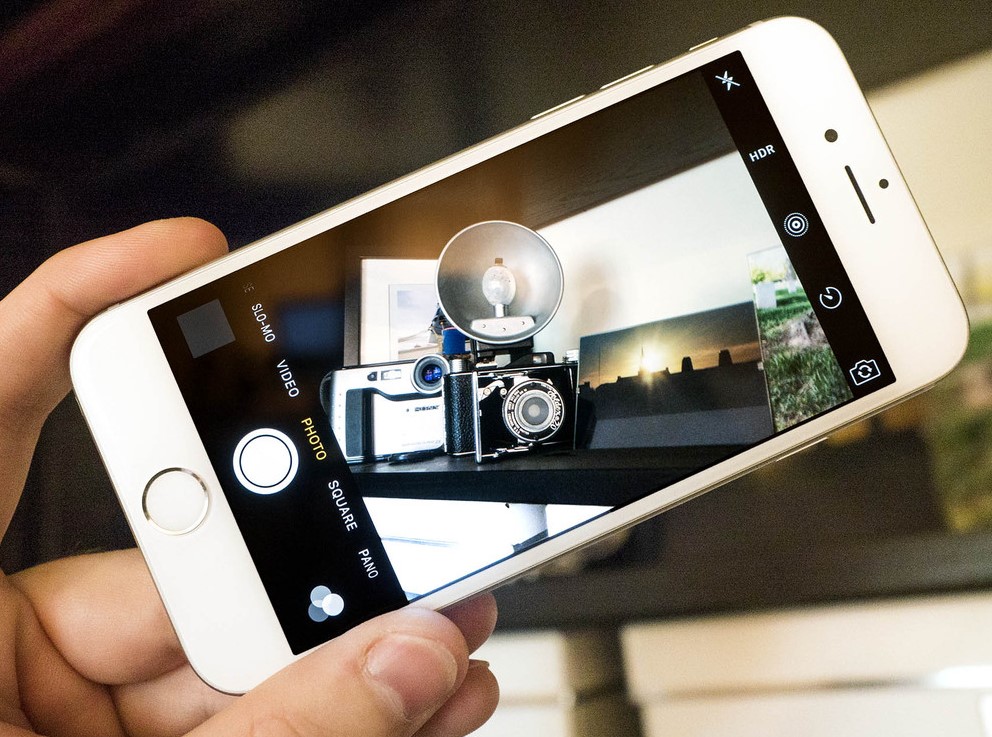
You might not give much thought to the app that snaps all those photos on your phone, but you don’t have to stick with the tool Apple or Google (or Samsung or Sony) gives you—there are some fantastic third-party camera apps out there to help take your mobile photography to the next level.
1) Manual
Manual gives you access to the pro settings that the iPhone camera app leaves out: shutter speed, ISO, white balance, focus and exposure can all be adjusted. There’s also a basic histogram and photo map integrated into the viewfinder interface for easy access while you’re framing and reviewing your shots.
You get a choice of white or black themes, an EXIF viewer is included, and there’s even a rule-of-thirds grid overlay available—getting your subject or action close to the crossover points leads to the best results, at least in theory. Perhaps most importantly, the app is clean and intuitive to use. [$3, iOS]
2) Camera FV-5
Camera FV-5 can be thought of as Manual for Android, because again it brings you more control over your snaps through the settings that serious photographers rely on. Exposure, white balance, ISO, shutter speed, and several other key configuration options let you get your photos looking exactly the way you want them to.
There are several handy features to make use of even before you press the shutter button too: You get a choice of ten composition grids and nine crop guides on the viewfinder screen. For reviewing pictures, there’s an EXIF viewer available, and support for RAW image export, too. [$4, Android]
3) Focus
One of the headline features of Focus is focus peaking (which is apt, given its name). In the app, objects currently in focus are highlighted on the viewfinder screen, giving you another tool for intelligently composing shots and producing effects like bokeh background blur. High-resolution TIFFs are one of several output options.
There’s lots more in the app too—fill flash, shutter speed control, white balance adjustment, exposure compensation, and a live light meter you can use as you’re framing shots. Additionally, there’s a companion Apple Watch app, which allows you to use the wristable as a remote control. [$2, iOS]
4) Camera360
Camera360 has long been one of the most popular camera apps on Android, and though it makes a lot of its ‘funny stickers’ feature, there are many more serious tools here to make use of—you get a stack of Instagram-style filters to experiment with and a full suite of editing tools like crop and straighten.
You can preview any of Camera360’s filters while you’re actually taking a photo, which saves you the trouble of having to pick one afterwards, and while all the social features might not be to everyone’s taste, it’s difficult to think of many editing or tweaking options that the app doesn’t include. [Free, Android]
5) Camera+
Camera+ has been around for several years now, but it’s still one of the camera apps to beat on iOS. It manages to include a big bunch of pro-level photography features without ever becoming daunting or complicated. In fact, the interface is so neatly done that it feels like Apple itself could have designed it.
The app brings with it a stack of filters, a superb HDR mode, instant focus and exposure controls, a variety of preset modes, and a lightbox feature where you can quickly review the snaps you’ve taken. For both its manual controls while taking photos and its tools for tweaking them afterwards, the app scores highly. [$3, iOS]
6) ProShot
Grid overlays, custom aspect ratios, RAW export, white balance adjustments, exposure control, shutter speed settings… if you can name it, chances are ProShot has it. Despite the raft of functions and settings on offer inside the app, the interface never feels cluttered or difficult to navigate around.
You can get a live histogram up on screen, choose from a range of preset modes (like Night and Action) for your photos, and dig into EXIF data after taking them—all of which makes this one of the most comprehensive camera apps around on any mobile platform. [$3-4, Android, iOS and Windows 10 Mobile]
7) Instagram
Instagram’s whole existence is based around improving your mobile photos and the editing features that have gradually been added to the app make it a genuine alternative to the default camera apps for iOS and Android. Of course, it can process images that aren’t perfectly square now as well.
It’s not as feature-packed as some of the other apps here but for casual users it’s difficult to beat—you can get your snaps looking a lot better in just a couple of taps. Filter strength can be adjusted and there are plenty of adjustments to play around with. [Free, Android, iOS and Windows 10 Mobile]
Source: David Nield fieldguide.gizmodo.com
Connect with The Mark Consulting & Marketing
Twitter Facebook Instagram Youtube Pinterest Soundcloud Google+
